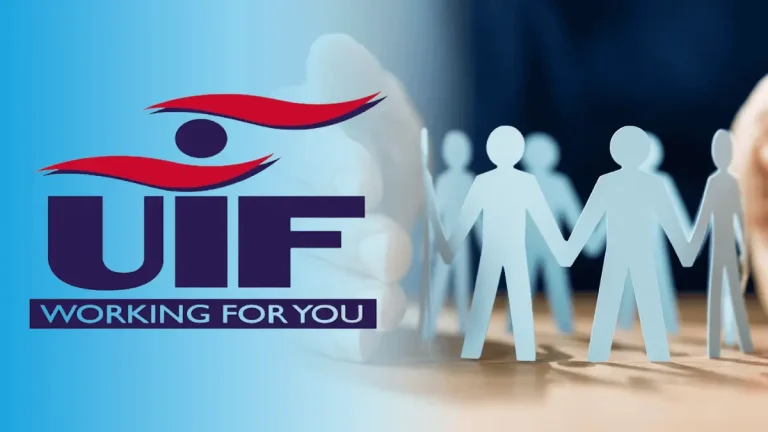For thousands of Gauteng residents who have recently lost their jobs, gone on maternity leave, or fallen ill, the Unemployment Insurance Fund (UIF) is meant to offer temporary relief. Yet for many, waiting for that first payment feels like an eternity.
Thank you for reading this post, don't forget to subscribe!So, how long does UIF actually take to pay out in 2025?
According to the Department of Employment and Labour, most applicants receive their first payment within four to eight weeks after submitting a complete and accurate claim. Once approved, payments are made every four weeks until the available credit days are used up or the claimant finds work again.
But that timeline can stretch to several months when forms are incomplete, employer data is missing, or personal details don’t match official records. In UIF’s world, accuracy equals speed — and mistakes mean delays.
ALSO READ: How to Check UIF Balance Using ID Number: Easy Guide
Why UIF Exists
The UIF was created to provide short-term financial relief to South Africans who lose income due to retrenchment, illness, maternity leave, adoption, or the death of a contributing spouse.
Every employee who works more than 24 hours per month contributes 1% of their salary to the fund, while employers contribute another 1%. Those small monthly deductions become a safety net during difficult times — but only if both employer and employee have made their contributions correctly and on time.
When companies fail to declare employees or submit forms late, it can leave workers stranded just when they need support the most.
Who Qualifies for UIF
You can claim UIF if you’ve:
- Been retrenched or dismissed
- Reached the end of a fixed-term contract
- Stopped working due to illness, maternity, or adoption leave
- Are the spouse or child of a deceased contributor
You cannot claim if you resigned voluntarily, absconded from work, or were suspended for misconduct. The only exception is constructive dismissal, which must be verified by the CCMA.
How Long Does It Take for UIF to Pay Out
The Short Answer
If everything is correct, you should receive your first UIF payment within 4 to 8 weeks after registering your claim.
Payments then continue every four weeks until your credits run out.
When documents are missing or details don’t align, the process can take three months or longer.
What Happens During That Time
Weeks 1–2: Verification phase
Labour Centre staff or the UIF’s online system verifies your ID, banking details, and your employer’s UI-19 form for errors or mismatches.
2–4: Assessment phase
Your claim is evaluated for eligibility and matched to your contribution history.
4–8: Paymaster approval
Once approved, your claim moves to the “Paymaster close” stage, meaning your payment has been queued. The funds are then transferred into your bank account.
Every 4 weeks thereafter: Benefit continuation
To continue receiving payments, you must sign the register at your Labour Centre or submit a continuation form online through uFiling.
What Affects the Waiting Time
Several factors determine how fast UIF pays:
- Incomplete claims: Missing payslips, unsigned forms, or unverified bank details force the process to restart.
- Employer compliance: If your employer fails to submit your termination form (UI-19) or last contribution, your claim will stall.
- Incorrect personal details: A mismatch between your ID, surname, and bank details is one of the most common reasons for delay.
- Claim type: Unemployment and maternity benefits are processed faster than death or illness claims, which require more validation.
- High volumes: During periods of mass retrenchments or public-sector slowdowns, UIF offices become congested, slowing turnaround times.
How Much UIF Pays
UIF doesn’t pay a full salary. Instead, it uses a sliding scale that pays between 38% and 58% of your previous monthly earnings, depending on your income level.
- Workers who have contributed for four years or more can claim benefits for up to 238 days.
- Those with shorter contribution histories can claim one day for every six days worked.
- Maternity benefits last up to 121 days, while illness benefits cover only the period your doctor books you off.
What You Need to Apply
Before applying online or visiting a Labour Centre, make sure you have:
- Your 13-digit South African ID or passport
- Last six payslips
- Your employer’s UI-19 and service certificate
- A UI-2.8 form stamped by your bank
- Proof of registration as a work-seeker
- A completed UIF registration form
If you’re applying for illness or maternity benefits, include medical certificates UF86, UF92, and UF95 signed by your doctor.
Where to Apply in Gauteng
You can file your claim in two ways:
- Online via uFiling (www.ufiling.co.za): The fastest and most convenient method, available 24/7.
- In person at a Labour Centre: Offices operate across Gauteng in Johannesburg, Pretoria, Germiston, Vereeniging, Krugersdorp, and Randfontein.
Even online applicants must sometimes verify their ID and banking details in person before payments are released.
Why Some Claims Get Rejected
- Wrong or missing employer details: UIF can’t link your record if your employer’s data is incorrect.
- Duplicate submissions: Filing online and in person confuses the system. Choose one method.
- Missed signings: Missing your continuation date pauses payment until you report again.
- Fraud prevention flags: UIF verifies data with Home Affairs, SARS, and banks. Any mismatch freezes the claim until resolved.
How to Speed Up Your UIF Payment
- Use your current surname and make sure your bank account matches it. Update both with Home Affairs and your bank if you’ve changed names.
- Apply online — the digital route is faster and more traceable than manual submission.
- Submit all documents at once, including salary schedules and proof of employment.
- Follow up weekly by calling your Labour Centre to check on progress.
- Keep a record of every form, SMS, and email in case your claim requires re-verification.
Why This Matters for Gauteng Workers
UIF has become a vital safety net in a province where unemployment remains high. From Soweto to Soshanguve, timely UIF payments can mean keeping lights on, paying rent, and feeding a family while job hunting.
Delays, however, often come down to simple errors, the kind that can be avoided with preparation and patience. Gauteng workers can help ensure the system delivers on its promise by submitting accurate documents and keeping communication open.
A Labor Center officer put it best: “You can claim from the Fund if you’ve been contributing, but patience and precision are key.”
Step-by-Step Timeline Recap
- Weeks 1–2: Verification of ID, bank details, and employer records
- Weeks 2–4: Eligibility and contribution assessment
- Weeks 4–8: Paymaster approval and first payment
- Every 4 weeks thereafter: Continuation of benefits and follow-up payments
Average time to first payout: 4 to 8 weeks when all documents are correct.
Turning Paperwork into Progress
If you’ve lost your job or are on maternity leave, don’t delay your UIF registration. Apply as soon as your contract ends, ensure your employer issues a valid UI-19, and confirm your bank details match your ID.
For Gauteng residents, that preparation can be the difference between waiting two months or half a year for help.
Start now:
- Visit www.ufiling.co.za to submit your claim online, or
- Go to your nearest Labor Center for in-person support.
The UIF system may be slow, but it works when you do your part right. With proper paperwork and persistence, your first payment can arrive within weeks, turning uncertainty into stability for you and your family.




